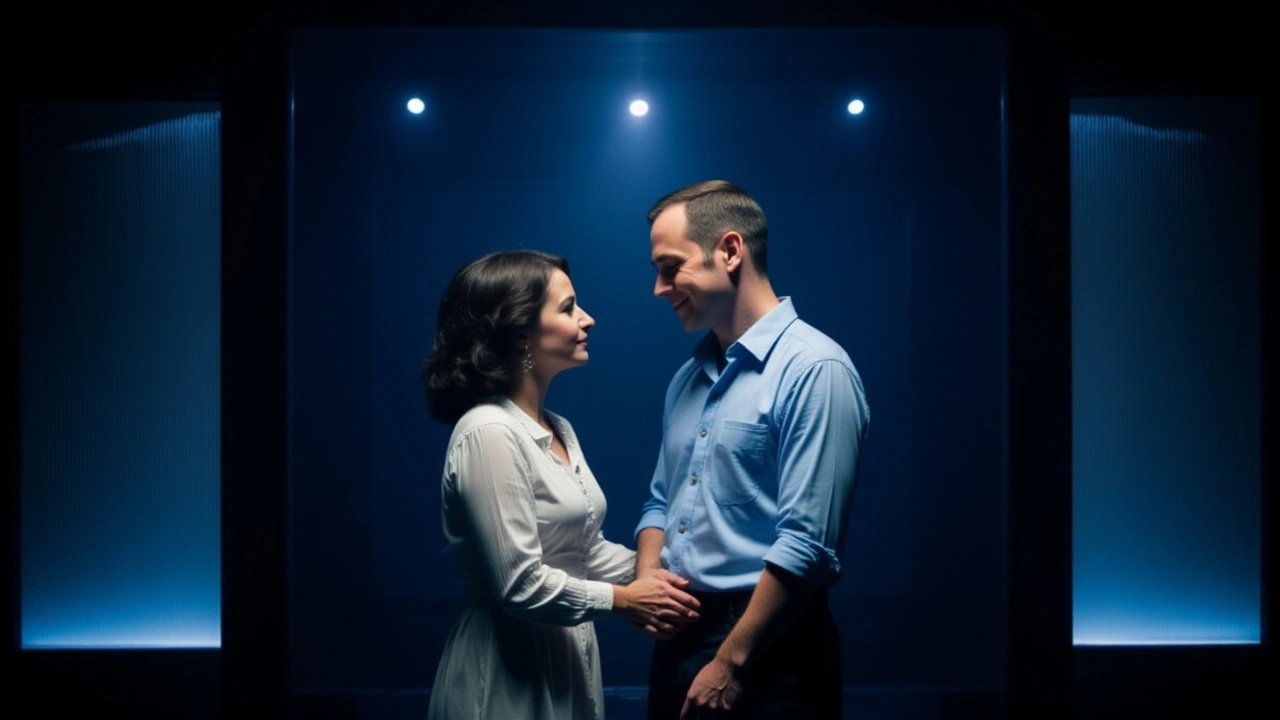When The Last Five Years opens with a single piano note and a woman whispering goodbye, you don’t just hear a song—you feel the weight of five years dissolving into silence. Currently playing at The Barn Theatre in Cirencester until November 15, 2025, this intimate, emotionally devastating musical has returned to the stage with a rawness that lingers long after the final chord. Transferred from a successful run at Reading Rep theatre (which ended October 12, 2025), and headed next to The Ustinov Studio in Bath, this production isn’t just touring—it’s evolving. And it’s dividing audiences.
A Love Story Turned Time Puzzle
Jason Robert Brown wrote The Last Five Years as a musical experiment in structure. One character, Cathy Hyatt (played by Martha Kirby), tells her story backward—from the breakup to the first kiss. The other, Jamie Wellerstein (Guy Woolf), moves forward—from their meet-cute to the unraveling. They only meet in the middle, at their wedding, during the haunting duet The Next Ten Minutes. It’s a narrative trick that turns love into a jigsaw puzzle, each piece a song that clicks—or doesn’t—into place.The staging, designed by Ethan Cheek, uses minimalism to maximum effect. A single wooden chair, a suspended bookshelf, and shifting pools of light from Jonathan Chan’s design do more than set the scene—they map the emotional geography of a failing relationship. One moment, Cathy is alone under a cold blue glow, singing Goodbye Until Tomorrow while Jamie, just minutes before, walks offstage for the final time. The door closes. The audience holds its breath. It’s one of those rare theatrical moments where silence speaks louder than any lyric.
Two Performances That Don’t Just Sing—They Break
Martha Kirby doesn’t play Cathy. She becomes her. Every tremble in her voice during I’m a Part of That carries the ache of a woman watching her husband’s success swallow her dreams. Her rendition of Still Hurting—a song about staring at a wedding photo two years after the divorce—isn’t just sung. It’s exhumed. Critics at The Stage called it “gutsy reality,” and they’re right. There’s no melodrama here, just the quiet collapse of a woman who loved too much and stayed too long.Guy Woolf is the perfect counterpoint: charming, self-absorbed, disarmingly funny. He turns Shiksa Goddess into a comic ode to infatuation, then snaps it shut in Nobody Needs to Know, where his smile fades and his eyes go hollow. You see the man who thinks he’s chasing greatness, not realizing he’s losing the only person who ever believed in him. Their chemistry isn’t romantic—it’s tragic. And that’s the point.
The Band: Invasive or Integral?
Here’s where the production splits. Four actor-musicians—Rebecca Demmer (cello), Wills Mercardo (guitar), Angus Tikka (bass), and Ellie Verkerk-Hughes (piano, musical director)—aren’t hidden in the pit. They’re on stage. They move. They react. They sometimes join the leads in choreographed moments, even forming a kickline during A Summer in Ohio.Some loved it. Musical Theatre Review called it “intimate yet charged,” saying the musicians “weave in and out like ghosts of the relationship’s memories.” But others, like All That Dazzles, called it “one of the biggest theatre disappointments I’ve ever experienced,” arguing the band “has no business being there.” The criticism? That Brown’s script is a two-hander for a reason. The intimacy of The Last Five Years isn’t just in its music—it’s in its isolation. When a cellist suddenly steps forward to mimic Cathy’s tears, does it deepen the emotion—or distract from it?

Light, Space, and the Unspoken
The lighting design deserves its own standing ovation. Jonathan Chan uses color like emotion: warm amber for early love, sterile white for arguments, deep indigo for loneliness. When Cathy sings I Can Do Better Than That, a single spotlight isolates her while the band fades into shadow—her voice cracks, and you feel every ounce of guilt Jamie doesn’t say out loud.Even the set, with its leaning bookshelf and scattered pages, subtly signals the passage of time. As Jamie’s career ascends, his side of the stage fills with books and papers. Cathy’s side? It empties. By the end, she’s left with just one chair. And the door.
What’s Next?
This production doesn’t end in Cirencester. On November 25, it moves to The Ustinov Studio in Bath, where the intimacy of the space may further amplify its impact. Director Hal Chambers has said he wanted to “challenge the traditional boundaries of musical theatre.” Whether that’s bold or misguided depends on what you think the story is really about: Is it about two people falling apart—or about how we try to make sense of love through art?Either way, the performances by Martha Kirby and Guy Woolf are unmissable. They don’t just sing Brown’s music. They live it. And if you’ve ever loved someone too hard, stayed too long, or watched someone you adore drift away—this show will feel like a mirror.
Frequently Asked Questions
Why does Cathy’s story go backwards in The Last Five Years?
Jason Robert Brown structured Cathy’s arc backward to mirror the way heartbreak often feels: you start at the end, replaying every mistake, wondering where it went wrong. Meanwhile, Jamie’s forward timeline reflects how ambition can blind you to the cost—until it’s too late. The only moment they truly connect is at their wedding, making it the emotional center of the entire story.
Who are Martha Kirby and Guy Woolf, and why are their performances getting so much praise?
Martha Kirby and Guy Woolf are both classically trained musical theatre performers with extensive UK stage credits. Kirby’s control over vocal nuance—especially in Still Hurting and Goodbye Until Tomorrow—has been called “devastatingly precise” by The Stage. Woolf brings a magnetic, flawed charisma to Jamie, making his selfishness feel human, not villainous. Their chemistry isn’t about romance; it’s about disintegration.
Is the inclusion of the four musicians controversial, and why?
Yes. Critics like All That Dazzles argue that Brown’s original concept is a two-person chamber piece, and adding the band as active characters breaks the fragile intimacy. Others, including Musical Theatre Review, believe the musicians serve as emotional foils—representing the external pressures (career, society, art) that pull the couple apart. The debate centers on whether the production is innovative or overreaching.
What makes The Last Five Years different from other musicals?
Unlike most musicals that use ensemble numbers and big choruses, this show relies entirely on two voices and a small band. There’s no intermission, no set changes—just 90 minutes of raw, unbroken storytelling. The music isn’t decorative; it’s the narrative. Each song is a diary entry, a confession, a wound. It’s less a musical, more a novel set to piano and cello.
Where else is The Last Five Years playing after Cirencester?
After its run at The Barn Theatre in Cirencester ends on November 15, 2025, the production transfers to The Ustinov Studio at Theatre Royal Bath, running from November 25, 2025, to January 3, 2026. The smaller, more intimate space there may heighten the emotional impact, especially for audiences familiar with the original Off-Broadway version.
Is this production faithful to Jason Robert Brown’s original vision?
The music and lyrics are unchanged, and the core narrative remains intact. But the directorial choices—particularly the visible band and stylized movement—depart from the minimalist 2002 Off-Broadway premiere. Brown has praised productions that honor the emotional truth, even if they take risks. Whether this version succeeds depends on whether you believe the music needs to be protected… or unleashed.
